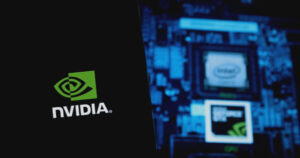Are you looking to stay ahead in the ever-evolving world of technology and innovation? Well, look no further than the groundbreaking collaboration between HP 3D Printing and NVIDIA Modulus, who have teamed up to revolutionize manufacturing digital twins using physics-informed machine learning. This partnership is set to push the boundaries of AI engineering applications by integrating physical laws into the learning process, as reported by NVIDIA Technical Blog.
Under the scope of this collaboration, HP 3D Printing and NVIDIA Modulus are working together to develop an open-source manufacturing digital twin, leveraging the power of physics-ML. Physics-ML is an emerging field that incorporates physical laws into machine learning models, enhancing their generalizability and efficiency. NVIDIA Modulus, an open-source framework, provides a simple Python interface for building, training, and fine-tuning these models and offers reference applications to help domain experts apply physics-ML to real-world use cases.
HP, a leader in additive manufacturing, has been utilizing physics-ML models for their manufacturing digital twin in the HP 3D Printing Software Organization. By contributing their work to Modulus, HP aims to accelerate the adoption of this technology in production environments. Dr. Jun Zeng, HP’s distinguished technologist, highlights the significant speedups achieved with well-trained physics-ML models, grounded in manufacturing process variability.
One of HP’s latest innovations, HP Metal Jet, allows for the production of industrial-grade 3D metal parts. To optimize design parameters and process control for Metal Jet technology, HP is developing a digital twin. The Virtual Foundry Graphnet model, created by the HP team, applies physics-ML to accelerate the computation of metal powder material phase transitions, enabling near real-time emulation of the metal sintering process.
By open-sourcing the Virtual Foundry Graphnet through NVIDIA Modulus, HP has joined the physics-ML open-source community, aiming to accelerate the development of this innovative field. Surrogate models based on physics-ML offer high-fidelity emulation, enabling faster design iterations and facilitating instant feedback on product design manufacturability.
The integration of product design and manufacturing optimizations, traditionally a time-consuming process, can now be significantly accelerated with physics-ML surrogate models. HP’s process physics simulation software, Digital Sintering, has been deployed to HP Metal Jet customers, reducing the time required for design iterations and improving manufacturing outcomes.
The collaboration between HP 3D Printing and NVIDIA Modulus is empowering researchers and AI enthusiasts to explore the potential of physics-ML surrogate models in near-real-time simulation workflows. This partnership aims to democratize AI for manufacturing, making advanced tools accessible to a wider range of innovators to solve industry challenges.
Stay tuned to Extreme Investor Network for more updates on the groundbreaking collaboration between HP 3D Printing and NVIDIA Modulus, as they continue to push the boundaries of innovation in the world of manufacturing digital twins using physics-informed machine learning.

